Anyone working with the latest generation of MIDI musical instruments – like the Eigenharp, LinnStrument, ROLI Seaboard, Haken Continuum and the Madrona Soundplane – has probably encountered the work of Belgium-based programmer & electronic musician Geert Bevin.
In the last several years, Bevin has helped create the software for some of the most innovative new electronic instruments, including the Eigenharp and Roger Linn’s LinnStrument. He’s also championed new types of electronic instruments, through his YouTube channel and his blog, Expressiveness in Electronic Music.
And Bevin has helped lead the creation of Multidimensional Polyphonic Expression (MPE) – the de facto standard for communicating expressive performance information over MIDI. MPE is already supported by Apple, Bitwig, Haken Audio, Moog, Native Instruments, ROLI, Spectrasonics and many others.
Roger Linn has described Bevin as “the finest software engineer I’ve worked with in my 35-year career.” And Bevin is using his talents to help define a new standard for expression in electronic music.
This interview is the second in a new series, produced in collaboration with Darwin Grosse of the Art + Music + Technology podcast. The first featured Roger Linn and his thoughts on the future of instruments. In this interview, Geert Bevin shares his vision for the future of electronic music instruments. You can listen to the audio version of the interview via the embed below or via the A+M+T site.
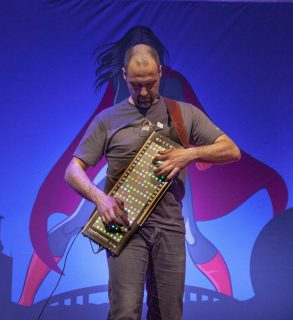 Darwin Grosse: Let’s start off by having you talk a little bit about the work that you do.
Darwin Grosse: Let’s start off by having you talk a little bit about the work that you do.
Geert Bevin: The work that I do is maybe best summarized as anything that can make electronic and digital music more expressive.
If I find interesting projects that can use my help, if I have time and I’m motivated by what I see, then I’ll try to help out. This mostly stems from a long background in open source.
I started out my professional career as an open source software developer, and started traveling around the world and talking at conferences surrounding open source projects. Being a musician at heart and in practice almost as long as I’ve been a software engineer, when I got the opportunity to do something that paid in music…I basically transferred that open source mindset.
If I can make it publicly available, a lot of the work that I do is also available as open source. For example, for Roger and before that when I worked with Eiganlabs on the Eigenharp, it’s also open source. A lot of the projects that I contribute to are publicly available.
Darwin Grosse: What’s some of the first open source stuff that you worked on?
Geert Bevin: I contributed to the beginning of the GTK+ tool kit, which is one of the primary tool kits on Linux, but I was just getting my feet wet at the time.
Shortly after that, I sort of helped out with a Linux distribution that’s called Gentoo. I was one of the core founders, not the initial guy, but one of the first four or five that worked on that, and that sort of drove the direction of Gentoo Linux and its sweet spot among all the other Linux distributions.
I guess that’s the most visible open source project that I was working on. Then it just went on from there, just trying to pull things toward open source and shared ownership.
Darwin Grosse: What is the track that you took that got you into software development, as well as music and then finding a way to mesh the two?
Geert Bevin: I’ve been interested by those since as far as I can remember. Even when I was an eight year old kid, I wanted to become a singer, because my grandfather, he sang in the opera, and I was like, “Oh, I want to stand in front of people and sing.”
I was always singing. A friend of mine had a guitar and I learned how to play the guitar. I did the whole official academy path where I took six years of solfeggio and arrangements and harmony lessons. I went to jazz studios, the jazz school, learned jazz guitar, jazz singing.
That’s the whole musical path. I was on the track, in my mind, ever since I was a little guy. I wanted to become a professional musician.
Alongside, I was doing software programming as a hobby. That sort of started because I was amazed by what computers could do, back in the time of the VIC-20 and the Commodore 64, and then the Commodore Amiga.
I was amazed by all the creativity that you could get out of a computer. That was also a sort of a sign of the times back then, in that when you bought a printer, there was no software to drive it. It was just shipped with base instructions in the Basic language. You hooked it up and it did nothing, and then it was up to you to program it so that it would draw.
I think that was the first time that I started programming for real, because I had to get that printer to do something.
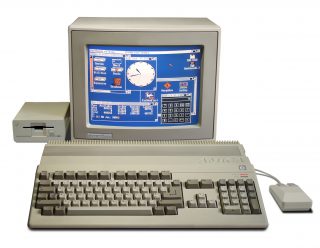 I was interested in how to make circles and how to get all these pretty images to be drawn, then the Commodore Amiga came out and I still remember standing in the store and looking at the leaflet that announced the Commodore Amiga and on there, there was a screenshot of a computer software package, I can’t remember the name, but where you could see musical notes on clefs, and I thought they were so beautifully printed. I had been trying to draw notes and circles and they were always a little bit off, and I was like, “Wow, this looks so nice.”
I was interested in how to make circles and how to get all these pretty images to be drawn, then the Commodore Amiga came out and I still remember standing in the store and looking at the leaflet that announced the Commodore Amiga and on there, there was a screenshot of a computer software package, I can’t remember the name, but where you could see musical notes on clefs, and I thought they were so beautifully printed. I had been trying to draw notes and circles and they were always a little bit off, and I was like, “Wow, this looks so nice.”
I got a Commodore Amiga, and then it just went from there, whenever I felt like I needed something that didn’t exist, I just coded it. I coded an ear training program, I tried this little shareware that didn’t really work out, but then I got into the whole open source movement.
When I was about 20 or 21, I was trying to become a professional musician, essentially playing on the street for food.
I went to a local print shop making jackets for my demo cassettes. I had prepared all of them, and they had to print them out, but they couldn’t figure out how to do it.
I knew how to do it – I did it at home, so I just helped them out. And then I figured out what the problems in doing that work were and how everything was slightly wrongly connected.
They said, “Well, don’t you want to come work here?”, and I said, “Yeah, why not?”
All of the sudden, I realized that I could make more money as a software engineer than as a musician. That sort of twisted everything around in that I’m doing music as a passion and don’t feel the need to do anything commercial or anything that draws audiences or might sell, I just don’t care.
People seem to want to pay me for what I do as a passion in computer programming also, so that sort of works out.
Darwin Grosse: You said that you saw your grandfather on stage and you wanted to get onstage in front of people. Coding firmware is like the opposite of standing onstage and singing to people, isn’t it?
Geert Bevin: Not really.
I look at coding as the same thing as if you sit down and write a musical piece. You’re writing it down, and in the open source world, you can share it with others afterwards and then travel across the world, meet people. I’ve done quite a lot of conferences where I talk about the code that I write, or even show the code that I’ve written live.
To me, there’s a sort of similarity to music. You’ve got different stages of rehearsals, where you’ve got your private rehearsal, you’ve got your public rehearsal with the band, and then you’ve got your private performance for your inner circle, and then your public performance for everyone.
It depends on what your relationship is with programming, but to me this is very similar. It’s just a tool, it’s just something that allows you to create.
Darwin Grosse: It’s almost like a different kind of instrument.
Geert Bevin: Yes. There are a lot of musicians now that don’t necessarily play notes in real time, but that assemble samples or loops or snippets or tracks and they overlay them on top of each other. It’s just another component that you organize in a different structural way.
The beauty of programming and code is that it can manifest itself not only in sound, but it can manifest itself in images and video, even controlling robots, controlling motors, sending stuff all across the world, communicating with other people.
In a way, it’s sort of creativity to the maximum possible extent.
Darwin Grosse: Talking about your background, especially having a background steeped in Commodore computers and getting a chance to work with Amiga, but also this experience with the plotter and trying to figure out the graphics and stuff like that, I’m kind of surprised that you didn’t latch on to graphics as the thing that was exciting you. Amiga at the time was so far ahead of everyone else with graphical capability.
Geert Bevin: Well, that interested me a lot, definitely.
Darwin Grosse: What caused you to go a different way though?
Geert Bevin: I guess probably because I was really attracted to Linux and the open source world, where the biggest problems to be solved were, at that stage, not necessarily graphics.
Afterwards, I was also very interested (when the internet came along) in the connectivity possibilities and providing ways for people to build interactive websites and the whole backend behind that, because a lot of people had trouble with that. It’s like the building blocks before you can get to the next stage, which is maybe the graphics and the rest.
Darwin Grosse: You have to have a foundation first, right?
Geert Bevin: Yes, and I think at the time that I was really proactively contributing to a lot of new projects, we were still at that stage. I got a little bit of reputation in the world of enterprise Java development for some of the web stuff that I did back in the day, and since that brought in so much work, I basically stuck there for awhile – until the Eigenharp.
Darwin Grosse: Is that really what broke you into the music side of things?
Geert Bevin: Yeah, I was playing music, I had a band that was doing quite well here locally.
I’ve always been playing the acoustic steel string guitar and singing, so really singer-songwriter approach, but the band was more like an alternative pop-rock band, and I figured that it was time for me to go towards the electric guitar. I found a nice electric guitar that has a piezo built in, so I still play it. It has this nice attack that comes along with these more sustain sounds of the traditional electric guitar,
But it also had a MIDI pickup, so it’s a 13-pin, and I’d never used that. I started being interested in that, and I’m like, “Okay, maybe I should connect that up to an interface so that I can actually gain access to this MIDI information and control synths with it.” And that never really worked out very well.
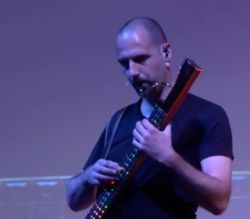 The Eigenharp came along, and I was like, “Wow, this is taking away the abstraction, it is directly touching a digital sensor with your fingers. It’s not trying to infer information from vibrating strings, but it’s a digital sensor that you can interact with in real time, individually for each note.”
The Eigenharp came along, and I was like, “Wow, this is taking away the abstraction, it is directly touching a digital sensor with your fingers. It’s not trying to infer information from vibrating strings, but it’s a digital sensor that you can interact with in real time, individually for each note.”
That resonated with me so much that I just went ahead and I bought one – I bought the big one.
I was like, “Okay, I’m going to dedicate myself to this.” I practiced a lot, you know how it goes. If you want to start feeling comfortable with an instrument, it’s hours a day for months on end, and so I did that with the Eigenharp.
I started feeling really comfortable with it, and then I saw that they posted an opening for a software engineer. I hadn’t done C++ since my Linux days. I was like, “Well, maybe I’ll try this.” They took a risk on me, and I took a risk on them, and it worked out really well.
That’s how I entered the music software development trajectory.
Darwin Grosse: Are you mostly self-taught when it comes to development?
Geert Bevin: Yeah.
Darwin Grosse: Did you have anyone that was a coding mentor, or a group where they were people that helped you figure it out, or did you have an innate sense of rightness and wrongness when it came to engineering?
Geert Bevin: Oh, no. There’s been a lot of people and a lot of groups.
If you’re active in the open source world, it’s dozens and dozens of people, you see their code, they see your code, you get the comments on what they think of what you do and you try to understand what they’re doing. It is sort of this melting pot of shared code ownership and knowledge.
There was a company that got me started in the Java world, it doesn’t exist anymore. It was a small company in Brussels, and there was one guy there, Alain Rogister, who sort of taught me how to write professional-grade enterprise code: code that is robust, that stands the test of time and that you can actually sell to a customer.
He taught me the ropes of that, because I was just a ‘script kiddy’ hacker when he got me onboard.
Apart from that, I think it’s just a collection of working on different projects, seeing different code bases, collaborating basically, which is the power of open source, right?
Darwin Grosse: What did getting involved with the Eigenharp mean to you?
Geert Bevin: I was really fascinated by it.
It was also a challenge….like I had to prove to myself, as an accomplished musician, good or bad, but someone that had been playing the guitar for more than 20 years. Going to an instrument where…you have no clue what you’re doing and everything sounds wrong is a very humbling experience.
You either can be very frustrated by it and saying, “Okay, this is too difficult!”, and “Who are they? They’re too crazy! This is impossible.”
I think that a lot of that is because you’re good at another instrument. Since you’re able to express yourself in traditional instruments, then imagine grabbing a cello and trying to play with a cello or a violin, you’ll probably have a similar reaction to it, it’s like, “I have no idea how I have to hold it, are you serious? Do I really have to put my chin on this and slant my head to the left? They’re completely crazy, they’re going to ruin the muscles in their neck.”
When I saw the Eigenharp and got it, I’m like, “Yeah, this is hard, but I have to be able to do this.”
Otherwise, it’s like only knowing one language, as soon as you learn the second language, you sort of went through the motions again and it kind of accelerates. I found that the same thing learning the Eigenharp, that other instruments are sort of accelerated. It was a challenge for me, definitely.
Darwin Grosse: That kind of leads into your work with MPE.
When I talked to Roger, he was like, “Well, we’re moving away from on/off switches,” but the nice thing about an on/off switch is that it’s pretty hard to screw it up. If it’s off you can turn it on, and if it’s on you can turn it off, and it’s hard to monkey something up.
If you have dimensional things that control pitch bending and stuff, it’s really easy to grab a chord and have it sound like a trashcan in about a half a second.
Both your experiences with the Eigenharp but also as you’re designing these other instruments, what do you do to make it so that that expressiveness is useful and not harmful?
Geert Bevin: Well, you’re actually touching on one of the most difficult points that people struggle with when they adopt any of the MPE-capable instruments. I think there’s only one of them, which is the Continuum, that offers a complete narrative, where you have both the input and the output with per-finger expression folded back into one instrument.
Where I want to go with this is that the advantage of making controllers like the Eigenharp or ROLI Seaboard is that anything is possible. The disadvantage is that people have to figure out for themselves what they’re going to do with it. It’s like a huge playground, and you have to sort of decide for yourself in which corner you’re going to play.
If you decide that you just step into the playground and you want to be all over the map, then you’re going to sound all over the map, and it’s going to take a huge amount of time before you master that entire area. One of the ways of doing this is, like we do with Linnstruments and what Seaboard also does, is to have an opinion on certain things.
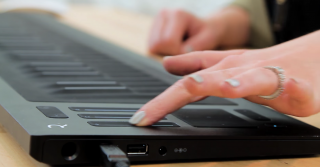 The Seaboard decides that it is structured like piano keys, so it imposes certain limitation in the gestures that you can do. Flowing from that, the whole interface towards interacting with it is derived from it and feels more natural towards certain gestures.
The Seaboard decides that it is structured like piano keys, so it imposes certain limitation in the gestures that you can do. Flowing from that, the whole interface towards interacting with it is derived from it and feels more natural towards certain gestures.
With Linnstrument, it’s similar in that Linnstrument is inspired by stringed instruments, so you’ve got horizontal rows that you slide across, but also probably more inspired by something like a lap steel than a guitar, because you can rest your hands on it and you can very comfortably hold a position.
One of the trickiest things with the Eigenharp is that you have this instrument in between your arms, in between your legs, and it is not just your fingers but it is all the joints of your finger, all the joints of your arm, your elbow and your shoulder, all have to move together to actually form a fluid motion, which is extremely difficult.
With Linnstrument, Seaboard, and Continuum, it is more restricted to certain limbs, certain aspects of your fingers, and also certain gestures you can make, it’s already formatted.
I think that is the first choice to make, is to give identity to the input sensors and input devices that you’re creating, then not create a completely blank slate that can do whatever you want.
Then the next thing is offering a good answer for people that want to get started with it.
What we do with Linnstruments, Roger and I, is that we don’t start in MPE mode. We start in a mode that works with any single MIDI channel instrument.
You’re going to first get accustomed to pressure. You’ve got your finger positions, pressure, and when you start using pitch, you’ll be able to vibrato a chord, so not individual notes, and then if you’re going to start sliding, it’s going to slide in discrete semitones.
It is only a sub-set of the vocabulary, but it’s very good for people that just want to use the existing sounds they have and start getting accustomed to the instrument that they’re exploring. I’ve seen quite a few people start with that, and then once they get more comfortable with it, then they start searching for what sound sources that they want to use with the per-note expression capabilities.
Darwin Grosse: Roger pointed out that on the Mac, you can get Mainstage and all of those Logic instruments have an MPE mode.
Otherwise, there isn’t a lot that can take that expressiveness and put it into something musical, or even turn it into something inspirational.
Geert Bevin: That is the main driving force behind the MPE standard.
Lippold Haken, with his Continuum, invented the initial approach toward using MIDI channels for individual touches. That has been refined along the way by all the different participants in this space, but in slightly different variations.
Unfortunately, it was never really clear how to adopt this as a synthesizer maker.
So we spent a long time on MPE, to try to make it as simple as possible.
The number of steps necessary are really very few, it’s mainly just an agreement of all the things that are already there so that we all know what we’re talking about and that there is no confusion about the ordering, the series of commands and messages, and the way how to basically divide the space up.
That is basically the premise of the MPE standard.
Darwin Grosse: Do you think it’s important for the MIDI Manufacturers Association to ratify it as a standard? Do you think that’s important in order to get the manufacturers to do the right thing?
Geert Bevin: Some of them, yes, some of them, no. It depends, there are quite a few smaller shops like U-He, they’ve been adopting MPE before it was even called MPE in most of their plugins.
Interestingly, before we were talking about MPE, Apple with Logic and Mainstage did it also, but Steinberg with Cubase also did it with VST Note Expression.
Darwin Grosse: I didn’t know that.
Geert Bevin: VST Note Expression is actually the most beautiful example of MPE and per-note expression, in that Cubase has visual editors for per-note multidimensional information.
If you recorded like that, instead of having these long automation lanes for your CC messages, they will actually have windows above each note, and you will see individual lanes for each note. You can fine tune them, you can compress them, slant them, fade them, redraw them if you want to, rerecord them, overdub them if you want to.
Darwin Grosse: Wow.
Geert Bevin: The reason why they developed that was for composers, because they wanted to offer composers individual expression for each note when they’re drawing their scores. What they were missing was the entry point. How do you play music in real time so that it appears as per-note visual information?
They added that two versions ago…I wrote a blog post about it, if people want to find out how to do it. You can play Linnstruments, Seaboard, Eigenharp, and it will be recorded as per-note expression score, and you can play it back again, which is quite amazing.
Darwin Grosse: Composers, and particularly film composers, are people that try and do this kind of thing, where you have different themes coming in and out of ensemble playing. That’s sort of the obvious place that MPE works.
But an awful lot of the music industry is driven by techno artists, hip hop artists, and pop artists. What would something like MPE offer them?
Geert Bevin: I think what sets the musician apart most is, that’s just my point of view on this, is his individual creativity, his individual-ness….I don’t know what you call this. The more personal information you can grab from someone that can bleed through into sound, the more unique it is going to be.
In a world where everything is so formatted where so many things sound the same in popular music, allowing people to have fewer and fewer barriers towards their own personal motions and gestures, so that they can be translated….in real time into sound – this is something that just individualizes each individual artist so easily.
It’s up to every person to figure out what that means in terms of the media that comes out of it.
For some people it might just be filter cutoff, for other people it might be that due to your gestures, you’re manipulating granularity or tempo, or it might be that the video projection or generated images in 3D, or I don’t know. It can be anything.
What we have been missing is sensors that are so fast that you don’t notice that there is a layer in between.
That is what started appearing since the Eigenharp and the Continuum, Seaboard, Soundplane and Linnstrument – they all have sensors that are as if you’re touching an acoustic instrument.
There’s no latency, the precision is there so that you don’t have any stair-stepping, and we haven’t had that. This is all new. I think that that is a very, very good story for any kind of digital artist.
Darwin Grosse: One of the things that I’m curious about is the separation of the controller from the instrument that makes sounds.
We’ve already talked about the fact that there are relatively few instruments that really take full advantage of the multi-levels of expression that something like MPE provides. To what extent do you think that there’s a problem in that the instruments that you lay your hand on are not developed in tandem with the applications.
Geert Bevin: It is a definite problem.
I see it as an advantage.
Before, I was much more frequently scrolling through patches. I’m was touching a key and trying another preset, to see which one sounds right. “Okay, I’m going to play this one.”
I never really felt connected with a particular synthesizer’s sound, it was just another preset.
With the MPE controllers, I’ve only got a handful of sounds that I’ve tweaked along the years, and I stick with them, because I’ve cultivated those particular sounds, learned how to use them, how they react.
It generates this feedback loop that you develop over time, very similar to the feedback loop that you have with your guitar, or your electric guitar where you know how you actually get physical feedback on that particular guitar and with that particular amplifier.
The same thing for me now happens with synthesizers and electronic instruments. I leave a patch up on my modular just because I found it and that one sounds so great with Linnstruments for particular sounds and I’ll just keep it. Once and awhile I’ll tweak it a little bit, but that’s it. It’s fine for me.
Yes, it takes awhile to find these sounds, but at the same time I think that they’re unique.
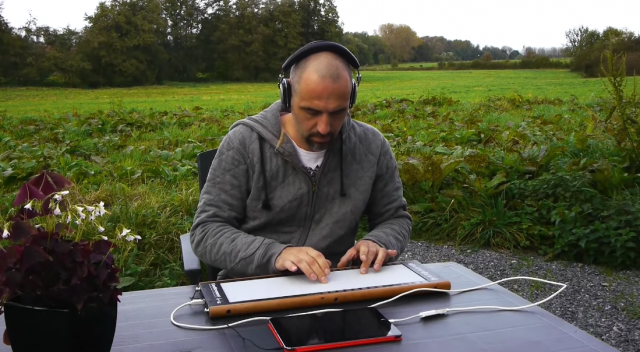
You have the opportunity – without having to dive into software engineering, electronics, hardware engineering – to create your own instrument that sounds completely unique and that you master much better than anyone else in the world can master an instrument that sounds like that. That’s the way that I look at it.
Darwin Grosse: All of a sudden, with MPE, your physical playing style is going to have an impact on the sound, where how you play the instrument is going to affect how it sounds.
It seems like one of the things that the MPE type of instrument does is it drives everything back towards reducing the number of sounds you have, but greatly refining them.
Geert Bevin: Yes, and also removing a lot of the LFO’s, removing a lot of the effects, removing a lot of the complex envelopes that transition a sound over time, because you can do that when you’re playing.
One of the things I find myself doing is reducing the complexity of many of the existing presets. It gets in the way of your own personal motions and gestures.
Darwin Grosse: Of course. They get in the way, literally they’ll bowl right over the top of you. You could have an LFO moving the filter around, it’s going to literally combat against you physically playing it. Very interesting.
Geert Bevin: It might be that you create a sound that has this. For example, rippling water – it’s always got a certain tempo to it, but you will have to design it so that it becomes an inherent part of the sound and that the LFO is not the vibrato.
The vibrato is something that you actually want to do yourself, and you can accelerate and decelerate it. Sound design becomes quite different.
Darwin Grosse: It’s very interesting, because as we’re talking about, I’m starting to realize that this actually has the opportunity of elevating the player.
A lot of electronic music right now is it actually accentuates sound design and de-emphasizes a player’s capability on the instrument.
Geert Bevin: Yes.
Darwin Grosse: This, in a way, says for those people who like to develop facility on an instrument: “Here’s a method to do it within the context of electronic sound.” It’s very interesting, it’s an interesting way to think of it.
Geert Bevin: There is something about all of the sudden playing electronic music but being worried about playing in tune and being worried about doing all the right gestures. Instead of just picking the right key, you get the similar kind of satisfaction as when you play a great guitar solo, because you’ve got control over the whole flow, this whole universe, and you come out of it completely satisfied, so much part of the performance that just happened in that moment in time.
Darwin Grosse: Do you still play a lot?
Geert Bevin: Yes. I’ve got this band that I started back up about three months ago.
I thought I didn’t lose any of my skills, but….oh my God! It was an awakening – even just holding the electric guitar for three hours in a row. I was like, “God, this hurts!”
Darwin Grosse: Yeah, there’s nothing about C++ coding that gets you ready for a guitar gig, that’s for sure.
Geert Bevin: We started that up again, and we actually started writing a few songs now with Linnstruments. I’m actually playing it, it’s quite a nice setup in that I’ve got the electric guitar and then I’m playing the Linnstrument as lap steel.
So, I’ve got a chair next to me, and onstage I’ll just sit down with Linnstrument and microphone in front of me that I can just move around. Yeah, we’ve been working on some new stuff there, and then I’m always messing around with analog synthesizers when I have a moment.
The problem is there’s so many interesting things always in the music programming world that, Roger comes up with an idea, or I come up with an idea.
That’s sort of a trap to fall into in that playing music and then, “Huh, that could actually be really cool!”
But I have to write it – and then I start writing it. And all of the sudden, it’s like a month later!
Darwin Grosse: Right, you have to come up for air.
I’m curious about your use of the Linnstrument. You said that you play it like a lap steel, but Roger has this background as a guitar player too. He talks about how it has pegs for a strap, and you could hold it almost like a Chapman stick or something like that.
I can’t imagine that, but he seemed to think that that was viable. Have you ever tried doing that, or does it just not feel right to you?
Geert Bevin: To me, it doesn’t feel right, but I know that Roger likes playing it like that. Everyone’s got their preference, which is sort of what’s beautiful about it.
Darwin Grosse: I guess, that’s true.
Geert Bevin: Actually, I did it by accident, just putting it on my lap and playing it like this, but I really like the feeling about it because when you press down, you also feel it on your thighs. There’s this physical relationship that your body has with Linnstrument that goes further than with just touching with your fingers, and I really appreciate that.
It’s a very nice feeling, it’s very similar to the feeling I have with the Eigenharp in that the Eigenharp, I hold it between my legs when I’m sitting down and I sort of embrace it.
Here, I don’t embrace Linnstrument, but it’s sitting on my thigh so it’s still very close in my personal space and it’s touching my body in more areas than just touching our tips.
Darwin Grosse: You’re literally getting more feedback of the instrument, that’s interesting.
Do you still play Eigenharp?
Geert Bevin: Not at this time, but it’s sitting right there in front of me, I look at it every day. Not enough hours in the day.
Darwin Grosse: Yeah, I imagine. I was just wondering though, because an instrument like that, especially a big instrument like that … I’ve always wanted to get a big upright bass, because I’ve always loved the sound of them but I always felt like having a large instrument like that in the corner of the room, it’s looking at you kind of saying, “Why aren’t you playing me?”, you know?
If I’m busy, I don’t like kind of feeling scolded by my instrument.
Geert Bevin: One of the downsides of the Eigenharp, just going back to that, is that it doesn’t output MIDI straightaway.
Linnstrument does that, Linnstrument I can hook it up to anything and it will work. For the Eigenharp, I have to turn on the computer, I have to launch the application, and I have to figure out how to connect it, it just takes too long. It goes in stages, but I’m still in the stage now where I don’t have much time for music, so I just don’t do it.
Darwin Grosse: When you sit down, you want it to happen.
Geert Bevin: It’s funny that you mention the Chapman stick though, because I ordered one two weeks ago.
Darwin Grosse: Oh, did you really? That’s actually the next instrument I’d like to take on.
Geert Bevin: Yeah, I ordered a Railboard. I really like that design, it’s so elegant, it’s very beautiful.
Darwin Grosse: It is.
Geert Bevin: I’ve been looking at it for many many years also, even before the Eigenharp. Maybe it’s time now, we’ll see.
Darwin Grosse: One last question, just again kind of going back to your experiences as a developer. Especially since you’ve done both musical and non-musical software development, what is the biggest difference in the two?
What is the thing that you have to be concerned about when you’re making a musical instrument that never happened when you were doing enterprise software?
Geert Bevin: You cannot treat a musical instrument as a collection of components or a series of layers.
With enterprise software, you usually abstract the hell out of it and you just compartmentalize and make sure that every little component does what it does and then you’re going to put it together later and make it work.
And, if it’s not fast enough, you throw another computer at it or maybe refine some algorithms or upgrade the network or rewrite parts of it.
It’s going to be a series of things working together, while a musical instrument can only work, in my opinion, if you constantly look at it from all angles.
You have to look at it from the musician’s point of view while you’re writing the code, and you have to evaluate how each individual gesture will be translated in real time so that it feels rewarding to the player, that things that happen can generate that feedback loop that yields creativity and that the interactions with it are natural.
If you’re going to have an urge to go somewhere, that it does that, and that it’s not, “Oh, I have to learn how to do this first and that first.”
You have to look at the whole picture, otherwise I don’t think it can work.
Darwin Grosse: Interesting, yeah. That’s a great point. Well thank you so much for your time, I really appreciate it.
Geert Bevin: Thank you, thanks a lot for inviting me!
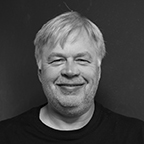 About Darwin Grosse: Darwin Grosse is the host of the Art + Music + Technology podcast, a series of interviews with artists, musicians and developers working the world of electronic music.
About Darwin Grosse: Darwin Grosse is the host of the Art + Music + Technology podcast, a series of interviews with artists, musicians and developers working the world of electronic music.
Darwin is the Director of Education and Customer Services at Cycling ’74 and was involved in the development of Max and Max For Live. He also developed the ArdCore Arduino-based synth module as his Masters Project in 2011, helping to pioneer open source/open hardware development in modular synthesis.
Darwin also has an active music career as a performer, producer/engineer and installation artist.
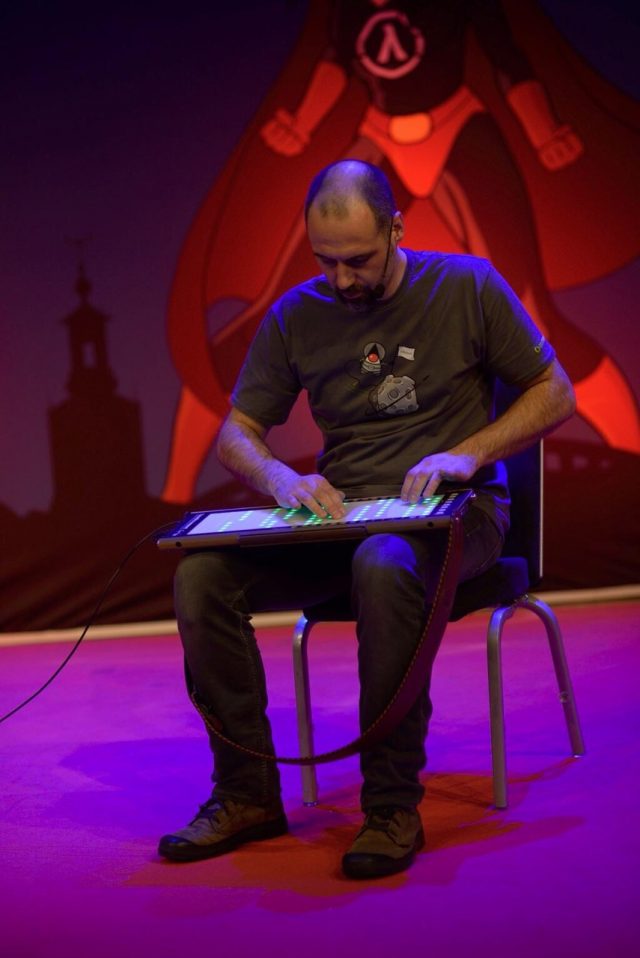
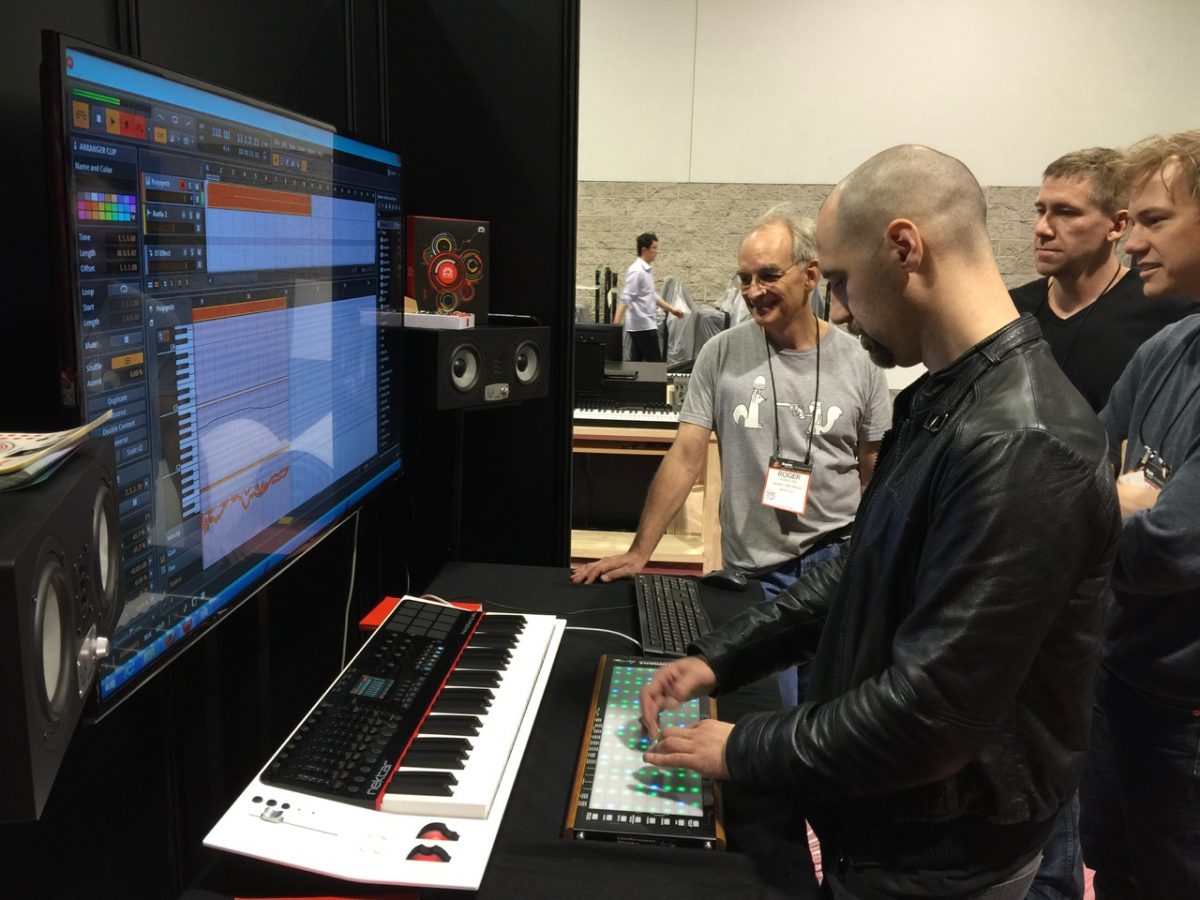


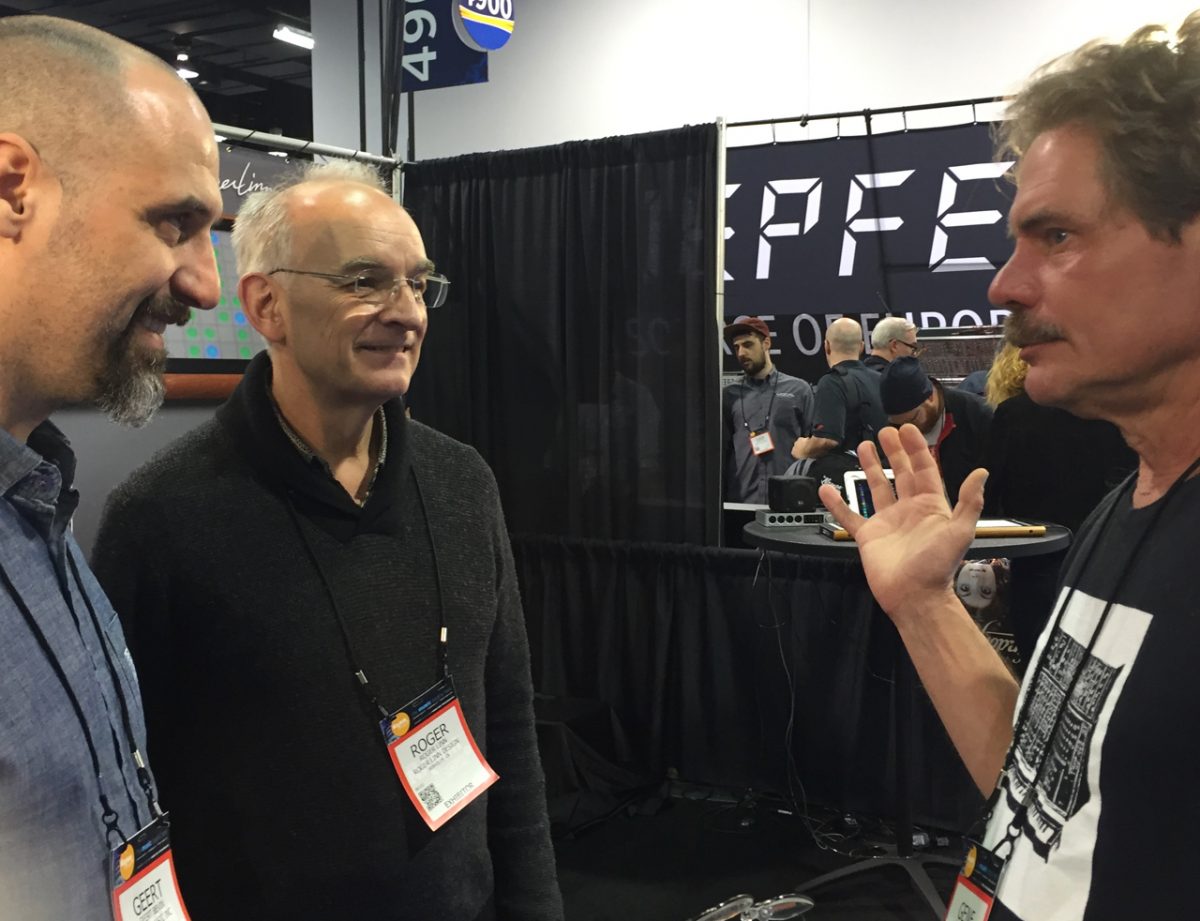

He’s also one of the developers for Moog Model 15, which is why it does MPE!
Brilliant guy! So excited about what is happening with MPE.
Which of the big three (Roland, KORG, Yamaha) will be first to get on board?
Well lets think about this here;
Korg doesn’t really care about innovation or what their customers are asking for (software updates to fix existing products, improving or expanding, etc.)
Roland may be a contender, but only if their execs can convince their engineers that it will make S&%t loads of money and they can somehow incorporate ACB.
I don’t know if I can say Yamaha, as I haven’t seen any innovation from them in, well, like forever (even the re-face b.s. isn’t anything “new”), and they seem too busy producing wooden pianos, silent guitars, motorcycles, and developing luxury resorts to care about MPE.
Out of these 3, my bet is on Roland, even though it seems lately they are not at all listening to what fans really want (real analog, not ACB).
But, in reality, I think it may be Novation or Nord that takes a step in the right direction with this.
DSI MPE module needs to hppen!
Keith McMillen Instruments is also developing an MPE compatible expressive keyboard, the K-Board Pro 4. Currently running a Kickstarter campaign, check it out: https://www.kickstarter.com/projects/kmi/k-board-pro-4-smart-fabric-keyboard
The Casio MG-510 MIDI Guitar, released in 1987, has support for MPE. You can connect the guitar to a synth and bend individual notes. All of this is supported by the original 1984 MIDI Specification, using such concepts as Channel Mode 4, Global Controllers, and various other parts of MIDI that people seem to have forgotten about. While it might be difficult to generate 3D expression with a guitar, the per-note MIDI capabilities go well beyond 3D with literally hundreds of potential expression controls per note.
I’m surprised to see Haken credited with MPE for a product released in 1999, because Dave Smith envisioned all of this in 1984 (even if it wasn’t fully described in the MIDI Spec). Granted, perhaps Haken was working on concepts in 1983 that didn’t make it into a commercial product until after Casio had delivered the MG-510 to the public.
As another example, the Oberheim Matrix-12 or Xpander can be controlled with three-dimensional per-note expression. The Xpander is limited to 6 touches, but the Matrix-12 can handle 10 or even 12 touches, with Pitch Bend, Pressure, and other expression control per finger. It’s takes a bit of finessing of the standard presets, but it’s a very expressive synth when played via a controller other than a keyboard.
Awesome interview with the developer.
Synthtopia and Darwin, thanks for doing this series!
Really great to hear Geert trumpeting the merits of open-source. And, the new MiniMoog app sounds fantastic.
Cheers,
– Matthew from Audiokit